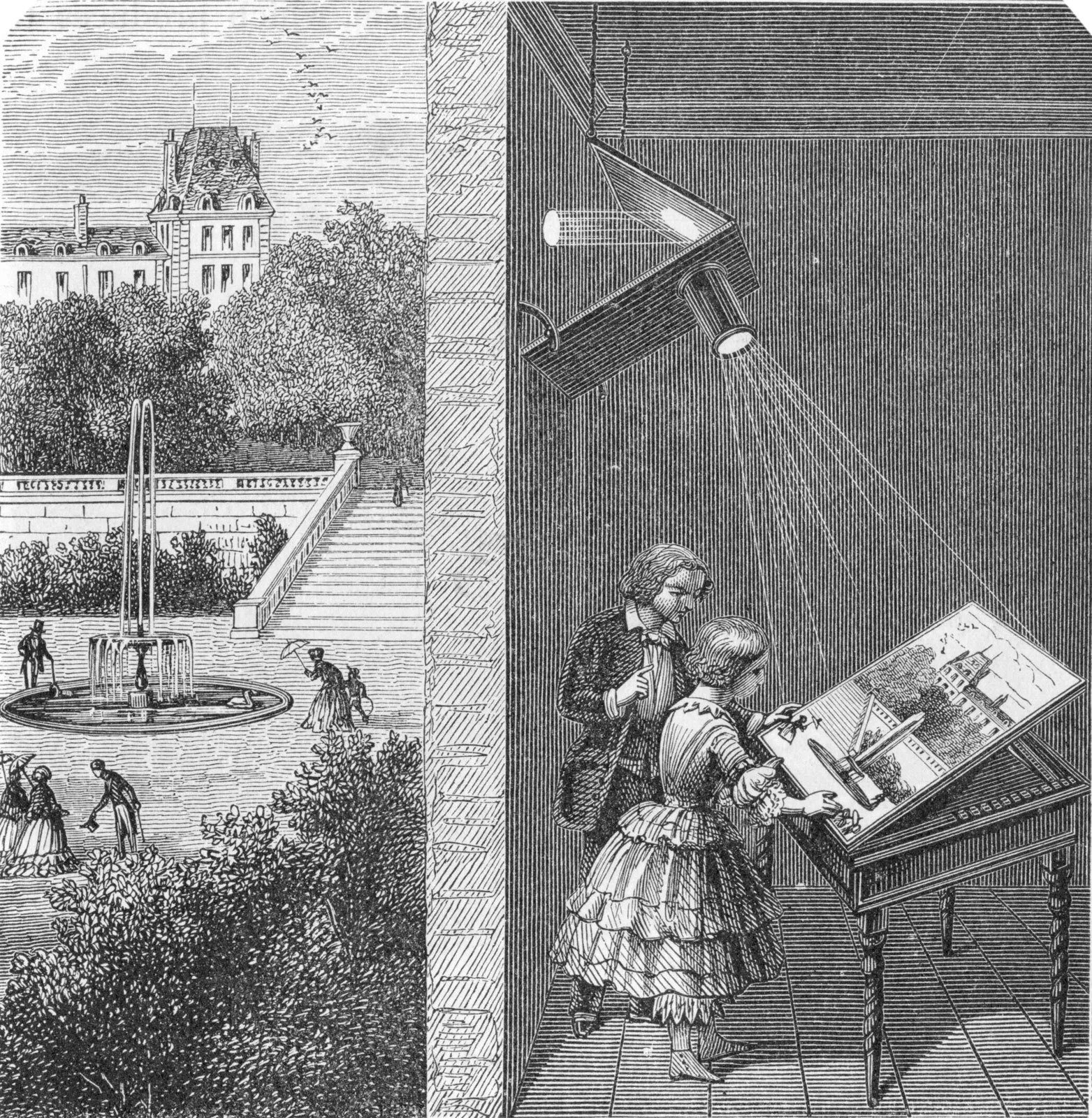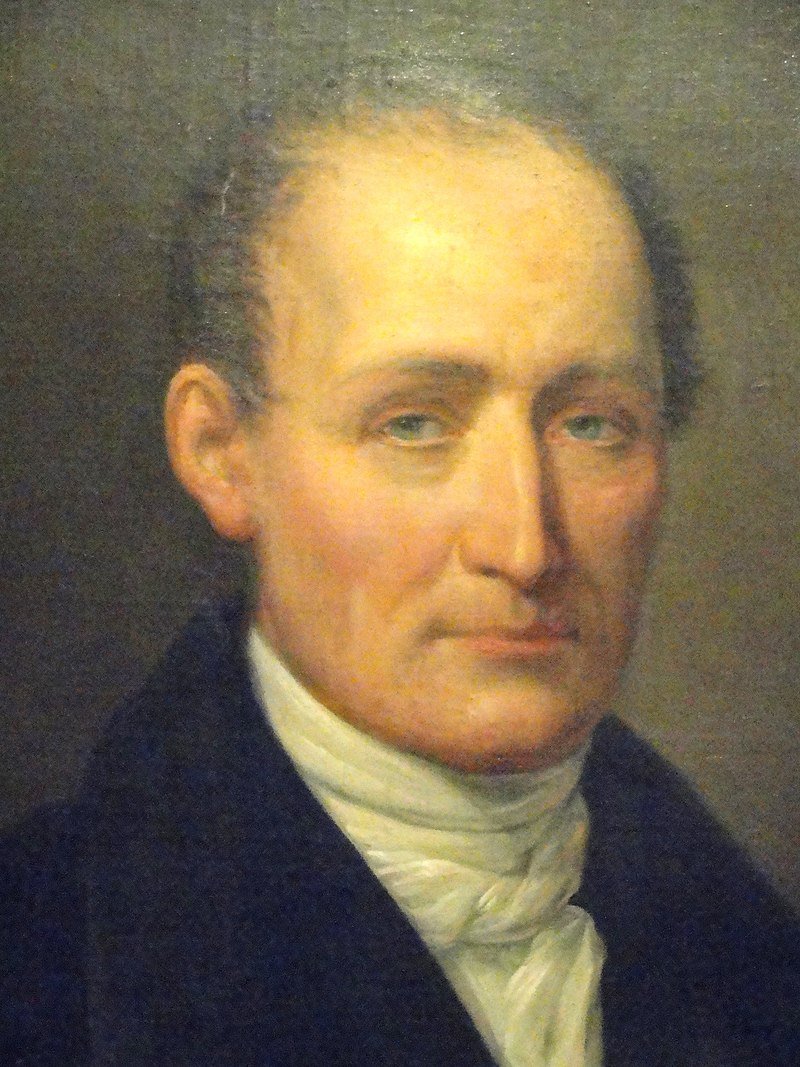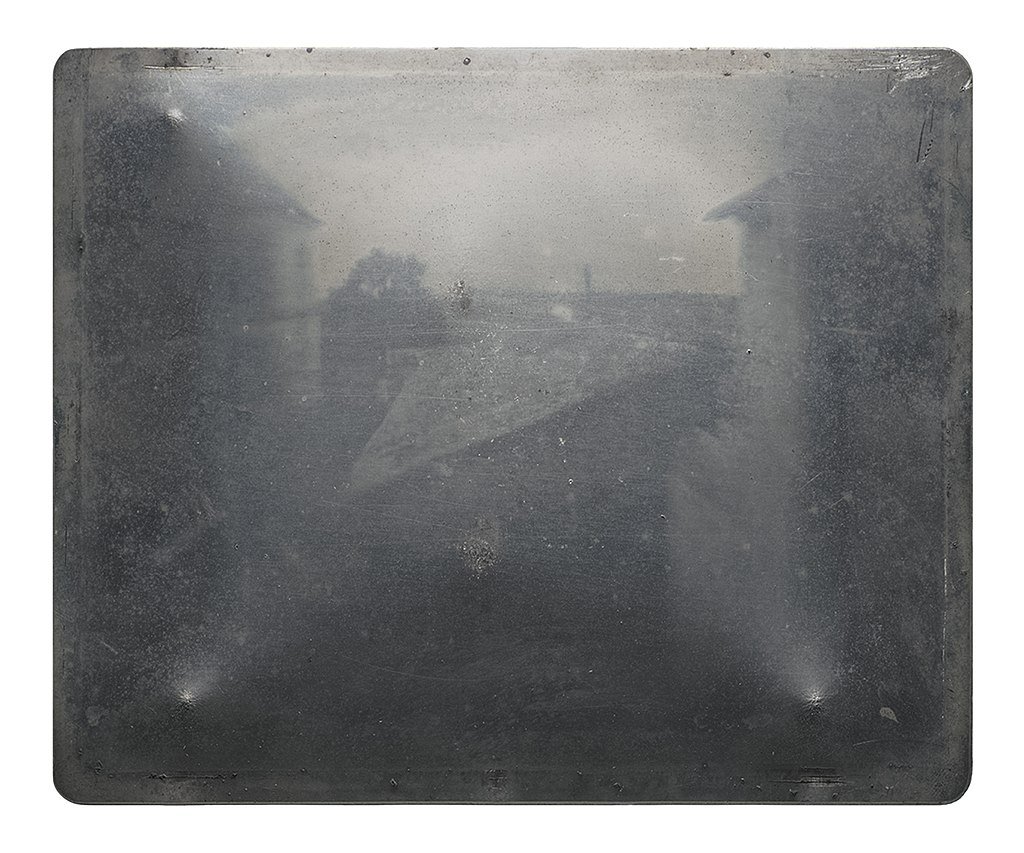How Photography Was Invented
Photography was invented through a series of experiments and developments by several inventors and scientists over the course of several decades.
The first known attempt at capturing images through a camera obscura (a device that projects an image onto a surface through a small hole) was made by the ancient Chinese philosopher Mozi in the 5th century BCE. However, it wasn't until the 19th century that photography as we know it today was invented.
Children watching an outdoor scene through a camera obscura, 1887; inverse image is reflected again onto the horizontally positioned drawing surface.
In 1816, Nicéphore Niépce, a French inventor, started experimenting with ways to create permanent images using light-sensitive materials. He developed a process called heliography, which involved coating a pewter plate with a light-sensitive material and exposing it to light through a camera obscura. The resulting image was not very clear, and the process took several hours of exposure time.
A portrait of Joseph Nicephore Niepce, the earliest saved photo by Niepce taken in Le Gras, France and one of 3 early photo artificats created by Niepce.
Niépce later teamed up with Louis Daguerre, another French inventor, to improve his process. They developed the daguerreotype process, which involved exposing a silver-plated copper sheet to iodine vapor, which made it light-sensitive, and then exposing it to light through a camera lens. The image was then developed with mercury vapor and fixed with a salt solution.
Daguerre introduced the daguerreotype process to the public in 1839, and it quickly became popular. The process was expensive and time-consuming, but it produced clear and detailed images that could not be replicated by any other means.
Over the years, photography continued to evolve, with inventors and scientists developing new processes and technologies to improve image quality, reduce exposure time, and make photography more accessible to the general public. The development of the negative-positive process by Henry Fox Talbot in 1840 was a major breakthrough, as it allowed for multiple copies of an image to be made from a single negative. The invention of roll film by George Eastman in the 1880s made photography more convenient and portable.
Photography by Sergey Ponomarev November 16, 2015. Migrants arrive by a Turkish boat near the village of Skala, on the Greek island of Lesbos.
Photography has become an integral part of modern life, with digital cameras and smartphones allowing people to capture and share images instantly and easily.






